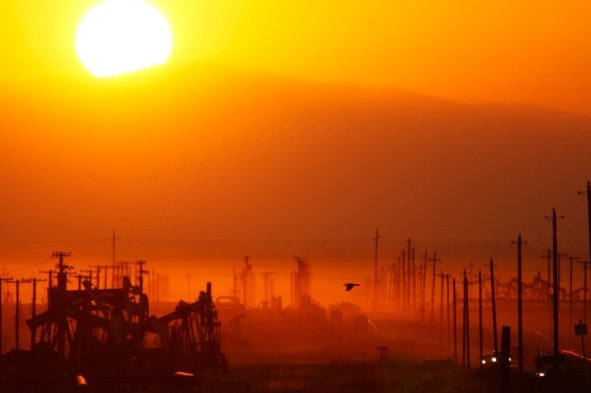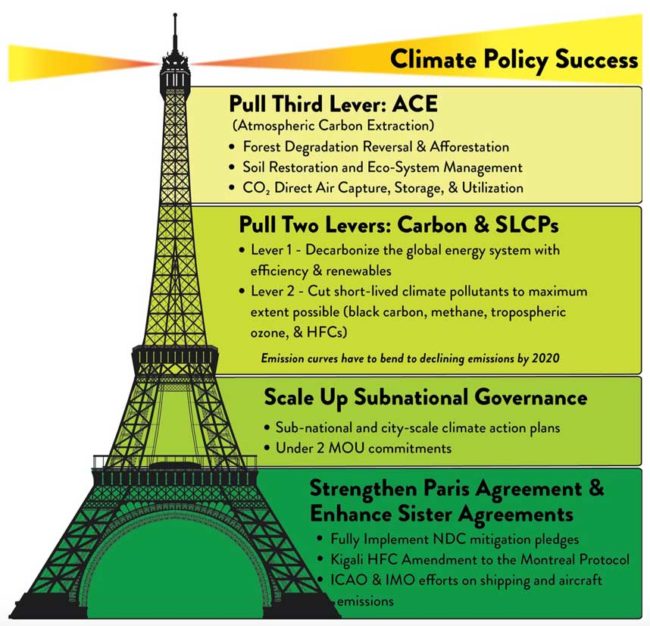 If we proceed with a business-as-usual scenario and fail to take truly meaningful decisive action to address Climate Change then there is about a 50 percent possibility that global temperatures will rise by 4 degrees celsius. This is an actual existential threat for our species and would be quite deadly.
If we proceed with a business-as-usual scenario and fail to take truly meaningful decisive action to address Climate Change then there is about a 50 percent possibility that global temperatures will rise by 4 degrees celsius. This is an actual existential threat for our species and would be quite deadly.
Where are I getting this from?
The opening paragraph above is the essence of two related papers that have been published by a group of climate science and policy subject matter experts. Their warning is clear – there still exists a window of opportunity for us to actually address it, but that window is fast closing.
Let’s briefly review each paper in turn.
Paper 1 – Well below 2 °C: Mitigation strategies for avoiding dangerous to catastrophic climate changes
This is a paper that has been published in the Proceedings of the National Academy of Sciences (PNAS).
They define three categories of risk for Global Warming as follows: >1.5 °C as dangerous; >3 °C as catastrophic; and >5 °C as unknown, implying beyond catastrophic.
There is general agreement that the Paris Agreement, the legally binding commitment by nations to reduce their carbon emissions, is not enough. More is needed, so they have taken a look at the warming trends to see where we are going. If there were no climate policies, then this is the projected outcome …
- Near term (<2050). Within three decades, the warming has a 50% probability of reaching dangerous levels (>1.5 °C), with the LPHI [low-probability (5%) high- impact] warming reaching catastrophic levels (>3 °C).
- Long term (>2050). Within eight decades, the warming has a 50% probability of subjecting the global population to cata- strophic (>3 °C) to unknown risks (>5 °C) and a 5% probability of being fully in the unknown risk category, which also includes existential threats for everyone.
So what must we do?
Rather obviously we must bend the warming curve into a downwards trend by the end of the century.
Why is this criterion for bending the warming curve important?
The Eemian period of 130,000 years ago was an interglacial period similar to the present and was warmer by ∼1 °C. It was associated with a 6- to 9-m rise in sea level, which suggests that a warming of 1.5 °C or more sustained over centuries can cause a catastrophic sea level rise.
If we wish to avoid this then we must begin bending the curve now – this is very challenging
The challenge is actually the socioeconomic system. We will not simply turn off our carbon emissions, that is not going to happen. Even if we had the ideal alternative clean technology right now then it would take decades for it to propagate and replace what we currently have.
But …bending the curve downwards is actually realistic.
Worldwide CO2 emissions grew at a rate of 2.9% per year from 2000 to 2011, slowed to 1.3% per year from 2012 to 2014, and further decreased to near-zero growth (−0.2% per year) for 2015. This near-zero growth rate continued into 2016.
The low to near-zero growth rate since 2014 is due to a combination of several factors: switching from coal to oil and natural gas; an increase in the production of renewable energy such as nuclear (1.3%), hydro (1%), and wind and solar (15%); and a reduction in carbon intensity of the economy. The negative growth rate from the United States (−2.6%) and China (−0.7%) mostly contributed to the recent bending of the emissions curve.
This is all very encouraging, but it is simply a beginning. We cannot avoid the reality we face: aggressive policies will still be required to achieve carbon neutrality and climate stability.
The obvious challenge is that in the long run even reducing what we emit is not enough.
Ultimately, we must thin the CO2 greenhouse blanket by removing the CO2 that is already in the atmosphere if we are to mitigate high-impact warming, and that needs to start happening by 2020. Yes really … that soon because anything later is too late.
When articulating climate goals, The authors of the paper also propose that such goals should be set in terms of climate risk category instead of a temperature threshold. They offer about three categories, but do also suggest that a more granular set of categories is required.
The temperature threshold has served policy very well; however, given the imminence of dangerous warming within decades, the focus must broaden to include extreme climate changes. Precipitation, flooding, fire, and drought will all become serious sources of concern. The temperature will still occupy our attention because of the heat stress phenomenon and the likelihood of approximately half of the population exposed to deadly heat by 2050
Paper 2 – Well Under 2 Degrees Celsius: Fast Action Policies to Protect People and the Planet from Extreme Climate Change
This second is a policy paper,. It is related to the first because there is an author overlap, but is very much focused on what we actually need to do. The authors of the first paper, Xu and Ramanathan, handed their findings off to a cadre of 33 policy and science experts, and so they have pondered over what we can do. This second paper is their output.
Here is an extract from the summary …
This report lays out urgent and practical solutions that are ready for implementation now, will deliver bene ts in the next few critical decades, and places the world on a path to achieving the long- term targets of the Paris Agreement and near-term sustainable development goals. The approach consists of four building blocks and 3 levers to implement ten scalable solutions described in this report by a team of climate scientists, policy makers, social and behavioral scientists, political scientists, legal experts, diplomats, and military experts from around the world. These solutions will enable society to decarbonize the global energy system by 2050 through ef ciency and renewables, drastically reduce short-lived climate pollutants, and stabilize the climate well below 2°C both in the near term (before 2050) and in the long term (post 2050). It will also reduce premature mortalities by tens of millions by 2050. As an insurance against policy lapses, mitigation delays and faster than projected climate changes, the solutions include an Atmospheric Carbon Extraction lever to remove CO2 from the air. The amount of CO2 that must be removed ranges from negligible, if the emissions of CO2 from the energy system and SLCPs start to decrease by 2020 and carbon neutrality is achieved by 2050, to a staggering one trillion tons if the carbon lever is not pulled and emissions of climate pollutants continue to increase until 2030.
To illustrate what the report describes in great detail there is also a diagram …
A massive effort will be needed, but this is wholly appropriate because the threat we face is both dire and unprecedented.
Doing nothing is not an option, and so here and the Ten Scalable Solutions outlined by the report
Science Solutions
1. Show that we can bend the warming curve immediately by reducing SLCPs, and long-term by replacing current fossil fuel energy systems with carbon neutral technologies.
Societal Transformation Solutions
- Foster a global culture of climate action through coordinated public communication and education at local to global scales.
- Build an alliance among science, religion, health care, and policy to change behavior and garner public support for drastic mitigation actions.
Governance Solutions
- Build upon and strengthen the Paris Agreement. Strengthen sister agreements like the Montreal Protocol’s Kigali Amendment to reduce HFCs.
- Scale up subnational models of governance and collaboration around the world to embolden and energize national and international action. California’s Under 2 Coalition and climate action plans by over 50 cities are prime examples.
Market- and Regulation-Based Solutions
- Adopt market-based instruments to create efficient incentives for businesses and individuals to reduce CO2 emissions.
- Target direct regulatory measures – such as rebates and efficiency and renewable energy portfolio standards—for high emissions sectors not covered by market-based policies.
Technology-Based Solutions
- Promote immediate widespread use of mature technologies such as photovoltaics, wind turbines, biogas, geothermal, batteries, hydrogen fuel cells, electric light-duty vehicles, and more efficient end-use devices, especially in lighting, air conditioning and other appliances, and industrial processes. Aggressively support and promote innovations to accelerate the complete electrification of energy and transportation systems and improve building efficiency.
- Immediately make maximum use of available technologies combined with regulations to reduce methane emissions by 50%, reduce black carbon emissions by 90%, and eliminate high- GWP HFCs ahead of the schedule in the Kigali Amendment while fostering energy efficiency.
Atmospheric Carbon Extraction Solutions
10. Regenerate damaged natural ecosystems and restore soil organic carbon. Urgently expand research and development for atmospheric carbon extraction, along with CCUS.
We have no choice
We must tackle the challenge of climate change. We only have the choice of when and how: either now, through the ambitious plan outlined within the report, or later, through radical adaptation and societal transformations in response to an ever-deteriorating climate system that will unleash devastating impacts—some of which may be beyond our capacity to fully adapt to or reverse for thousands of years.
Further Reading
- Scientific American: The Window Is Closing to Avoid Dangerous Global Warming

